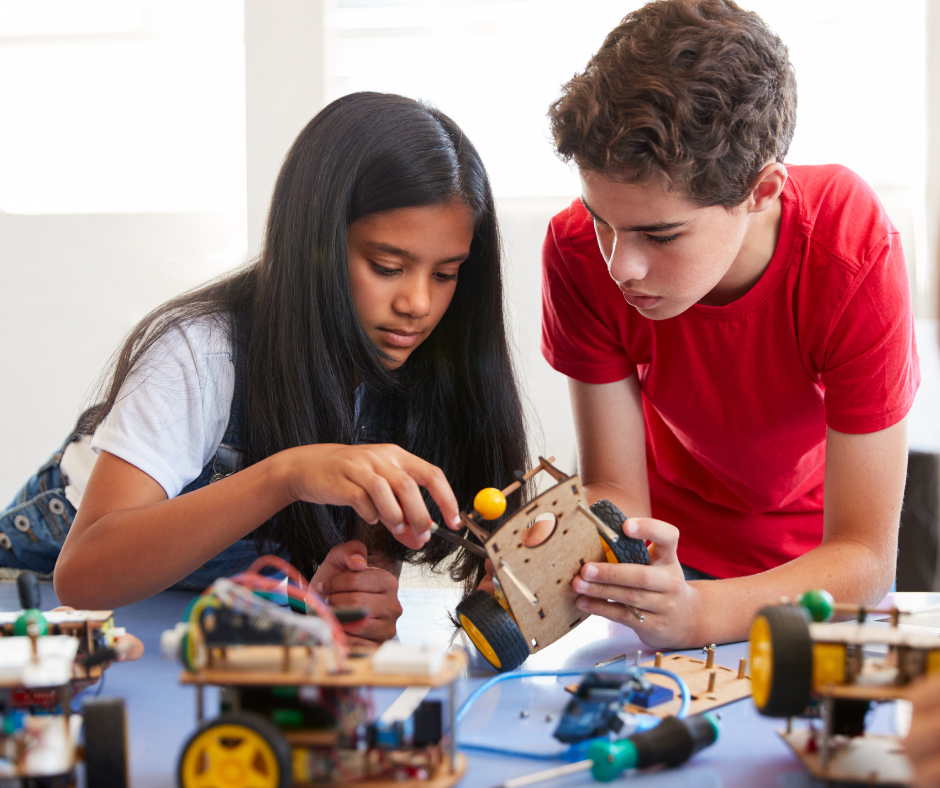
Small (and Large) Ways to Let Students Lead Their Own Learning
At Walkabouts, we understand the importance of students being invested in their own education. To encourage student buy-in, teachers can allow students to lead their own learning in small (and large) ways.
SMALL WAYS FOR STUDENTS TO LEAD THEIR OWN LEARNING
Student Choice
Giving students opportunities to make meaningful choices regarding their learning is a small, but impactful, way to increase engagement. Allowing students to make choices about what they learn and making student choice a regular part of the classroom dynamic shows students that they have some control over their education. A perfect opportunity for student choice can fall within a classroom theme and allow students to focus on and learn more about a topic within that theme.
Offering choice helps students with decision making, exploration of interests, and making connections. When students have opportunities to make genuine choices regarding their education, they feel more empowered and the learning experience is more engaging.
Regular Student Feedback
Another effective way to get students to lead their own learning is through providing direct feedback to their teachers. Teachers put tremendous efforts into lesson planning and curriculum building. However, teachers can benefit from small adjustments to make their lessons even more effective and engaging. Teachers should do their best to take feedback from students with grace, acknowledging that even best laid plans could be improved and/or fine tuned.
During the student feedback process, it is vital that teachers are completely present and are active listeners. Teachers can model active listening and show students the importance of being flexible and open to change. This modeling can help students become more receptive to receiving feedback themselves and more willing to share their ideas with others.
The following questions can help teachers gauge what worked in a particular activity, game, lesson, etc., and what could be adjusted.
- What was your favorite part of (activity, game, lesson, unit)?
- What is one thing you learned from (activity, game, lesson, unit)?
- What is one thing you would like to learn more about from (activity, game, lesson, unit)?
- What was one thing you would have changed about (activity, game, lesson, unit)?
- What part of (activity, game, lesson, unit) did you enjoy the least?
LARGE WAYS FOR STUDENTS TO LEAD THEIR OWN LEARNING
Self Assessments
Let students tell the teachers what they do and don’t understand — not the other way around. Self-assessment strategies are an important way for students to monitor and reflect on their own learning. Empowered with the knowledge of what works best for them, students can then appropriately and effectively guide themselves in their learning.
Self assessments can be as straightforward as entry and exit tickets. Using sticky notes or digital tools, ask students to recall something they learned from the previous day or what stuck with them at the day’s end. Additionally, students can complete a quick evaluation of where they are with a certain concept: whether they understand it, sort of understand it, or don’t understand it. Quick self assessments are helpful for teachers because they report what students have mastered and what students need more support with.
Self assessment at the end of a unit may be more in depth and include opportunities for students to synthesize the main takeaways through artistic expression and creative movement. Teachers can support students with this process by reminding students of the big ideas from a lesson and allowing students to creatively demonstrate their understanding. Instead of showing what they learned through a traditional assignment or test, students can self assess through an artistic display or creative movement. If desired, teachers can allow students to work in pairs or small groups to foster collaboration and teamwork.
Independent Student Work
A large way to get students to lead their own learning is through independent student work. Although this technique may be more challenging to integrate, the results are worth it. Traditional modes of learning based on the top-down model have teachers driving the majority of the classroom instruction. However, it is important to add opportunities for students to work independently and make decisions.
Independent learners have more control of what they are doing and are no longer entirely dependent on the teacher telling them what to do and when to do it. As a result, acting with initiative and taking risks can feel uncomfortable and unfamiliar to students, especially to those who are more dependent learners. Teachers can support students with independent learning opportunities through regular check-ins, offering frequent feedback, and reinforcing that it is OK to make mistakes.
This process may require reframing what the overall learning process and outcomes look like. Students should not only focus on what they get right but also how they respond to challenges along the way. Students should be more considerate of the genuine efforts they contribute to the task, not the total time they spend on it. The goal becomes less about going through the motions of completing the work and more about the overall mastery of the concepts through independent practice.
Try these small and large ways to let students lead their own learning in your classroom. Students will be more engaged in the learning process, more invested in learning outcomes, and more in tune with creative expression.
The Walkabouts platform was created to help kids lead their learning by moving more – and learning more! Walkabouts are simple-to-use, cost-effective active learning lessons that help teachers, schools, districts, and parents bring educational standards to life in fun, interactive ways. They’re easy to use in traditional, remote, and homeschool classrooms. Ready to try Walkabouts? Click here to sign up for a 30-day trial today!





